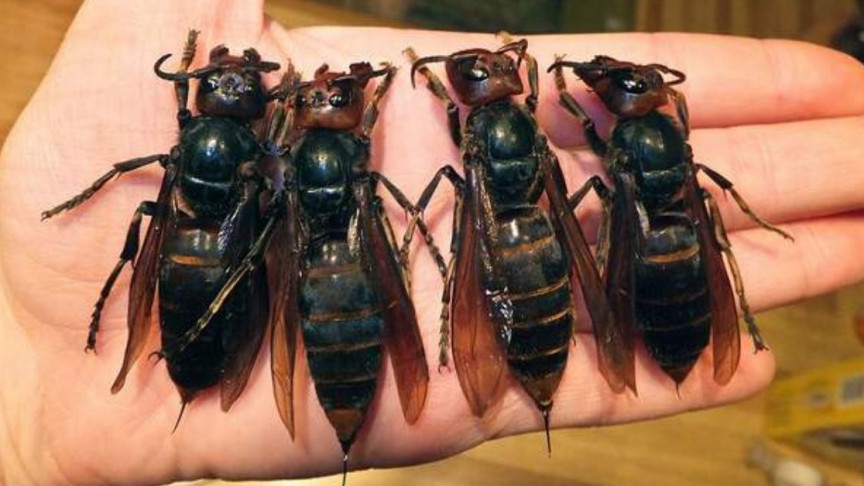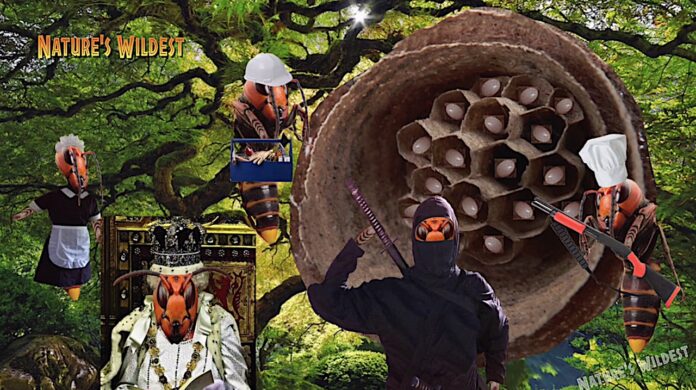In the vast tapestry of Earth’s biodiversity, few insects command as much awe and fear as the Asian Giant Hornet (Vespa mandarinia), colloquially known as the “murder hornet.” Here’s a dive into the life, habitat, and notorious kill rate of this formidable insect.
Region and Habitat
The Asian Giant Hornet is native to temperate and tropical Eastern Asia. Its natural habitat spans from Japan, where it’s most infamous, through Korea, China, and as far south as parts of Southeast Asia. These hornets prefer low mountains and forests, where they can easily find trees to nest in, but they’ve adapted to various environments, including urban areas where they can sometimes be found nesting in the ground or in hollow tree trunks.
The Life Cycle of a Hornet
The life of an Asian Giant Hornet begins in spring with a lone, fertilized queen. After emerging from hibernation, she scouts for a suitable nesting site. Here, she constructs a rudimentary nest using chewed tree bark mixed with her saliva, creating a papery material. Within this nest, she lays eggs, each in its own cell.
After the eggs hatch, the queen feeds these larvae with a paste made from chewed insects. Within a few months, the first batch of workers emerges, all females. In one of nature’s wildest events, these new hornets instinctively begin to expand the nest, forage for food, care for the queen, and protect the colony.
As summer progresses, the colony grows, producing males and new queens by late summer to early autumn. These reproductive individuals leave the nest to mate. After mating, the fertilized queens seek out overwintering sites, while the rest of the colony, including the old queen, dies off with the onset of cold weather. The cycle begins anew with the surviving queens in spring.

Kill Rate and Human Impact
The Asian Giant Hornet is known for its potent venom and aggressive group attacks when defending its nest. Annually, in Japan alone, these hornets are responsible for approximately 30 to 50 deaths, primarily due to anaphylactic shock or cardiac arrest from multiple stings. Their stings are incredibly painful due to the large amount of venom injected, which contains a cytolytic peptide that can damage tissue.
Ecological Role and Threat to Honeybees
While they are apex predators in their ecosystems, controlling pest populations, their introduction outside of Asia, particularly in North America, poses a significant threat to honeybee populations. A small group of these hornets can decimate an entire hive of honeybees in hours, targeting hives to feed their larvae with the bee brood. This behavior not only impacts beekeepers but also has broader implications for pollination and agriculture.
Conclusion
Understanding the life cycle, habitat, and behavior of these beautiful little bastards is essential for managing their populations, protecting biodiversity, and ensuring human safety. As we continue to study these magnificent creatures, we’re reminded of the intricate, sometimes perilous dance of coexistence on our shared planet.
Remember, hornets just want to be like anyone else. Don’t hate them ’cause they kill you. Love them, and be free.






